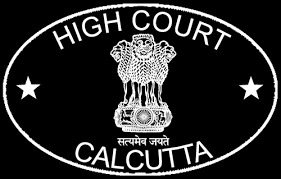Henry Richards, C.J. and Tudball, J.@mdashThis appeal arises out of a suit brought under the following circumstances. There were commercial dealings between the plaintiff and the defendants. In October, 1909, a balance was struck, and it was found that Rs. 4,000 odd were due by the defendants to the plaintiff, An arrangement was come to by -which the defendants agreed to pay off this sum by monthly payments of Rs. 50. Certain instalments were paid in pursuance of this arrangement and were duly credited to the defendants in the books of the plaintiff. Later on the plaintiff asked the defendants if they would accept a hundi for Rs. 500 if the plaintiff drow the same upon them and that the plaintiff would credit the defendants with the Rs. 500 in the books being the amount of the hundi. The defendants agreed to this. The plaintiff drew the hundi, the defendants accepted it but did not pay the amount on due date. The plaintiff had to pay the holder of the hundi and then brought a suit against the defendants for the Rs. 500. This suit failed. It is said that the defendants succeeded in getting the court to hold that their acceptance was forged and this matter need not be considered. All the facts stated above must be assumed for the purpose of the present appeal. The plaintiff has now instituted the present suit to recover the balance due by the defendants on their account. The defendants meet the suit with an objection based on order II, Rule 2, which is as follows
Every suit shall include the whole of the claim which the plaintiff is entitled to make in respect of the cause of action. "Where plaintiff omits to sue in respect of, or intentionally relinquishes, any portion of his claim, he shall not afterwards sue in respect of the portion so omitted or relinquished." A person entitled to more than one relief in respect of the same cause of action may sue for all or any of such relief; but if he omits, except with the leave of the court, to sue for all such reliefs, he shall not afterwards sue for any relief so omitted." "Explanation.-- For the purposes of this rule an obligation and a collateral security for its performance and successive claims arising under the same-obligation shall be deemed respectively to constitute but one cause of action.
2. It is contended by the defendants that the hundi mentioned above was a collateral security for the payment of money due on the accounts, and that it must be deemed to constitute the same cause of action.
3. In our opinion when the plaintiff sued alleging that the defendants had not paid the hundi which they executed, their cause of action was a totally different cause of action from the present one. The only connection between the two suits was that the consideration for the alleged acceptance by the defendants of the hundi was the discharge of the debt to the extent of Rs.500.
4. Strong reliance is placed on a decision of this Court in the case of Preonath Mukerji v. Bishnath Prasad I. L. R. (1906) All. 258. In that case a doctor agreed to attend a legal gentleman as his medical attendant on a fee of Rs. 100 a day. At the end of 7 days he gave the doctor a promissory note for Ss. TOO and he arranged to pay the balance by legal services to the doctor. Before the legal service to the doctor could be rendered the lawyer died. A suit was brought on the promissory note and a decree obtained. In the subsequent suit for the balance of the fee for medical service it was pleaded that the plaintiff was bound under the analogous provisions (Section 43) of the CPC then in force and that the suit was barred. The learned Judges held that this contention was well founded.
5. It seems to us that the correctnees of this decision is somewhat doubtful. We would think it would be impossible to contend that where a promissry note is given in discharge for a debt that a suit based upon it is on the same cause of action as the one brought on the original contract. For example A is indebted to B, and gives B a promissory note payable two months after date. If A were to sue for the debt before the expiration of the two months, it would be a complete defence for [B] to prove the making and acceptance of the promissory note. This illustration itself shows that the causes of action are not the same.
6. In the case of Payana Reena, Layana Saminathan, Chetty v. Pana Lana Pana Lana Palaniappa Chetty (1918) 16 C. W.N. 617 a recent case which came before their Lordships of the Privy Council the facts were as follows. Certain disputes between the plaintiff and the defendant were referred to arbitration. The arbitrators found a certain amount to be due from one party to the other and directed that this money should be paid by means of two promissory notes, each for half the amount. Suits were brought upon the promissory notes and failed for some technical reasons. Thereupon the plaintiffs instituted a fresh suit for the money found to be due according to the award. It was contended on behalf of the defendants (relying upon an exactly similar provision of the Ceylon Code) that the cause of action on the promissory note was the same as the cause of action in the suit, and that the latter was barred by provisions in the Code. Their Lordships of the Privy Council after citing the provisions of the Code and the facts of the case, say as follows: " Viewed thus, it is evident that a claim on the bills and a claim for the amount found due under the award and for which payment was provided by the agreement, are not the same cause of action but are in truth inconsistent and mutually exclusive causes of action. So long as the bills were outstanding there was no right of action otherwise than upon the bills. It is therefore impossible in their Lordships'' opinion to hold that claim for the amount due was the same cause of action as the claim upon the bills and ought to have been included in the prior action.
7. It seems to us that the facts of the case before us are much stronger than the case we have just referred to. We think the decision of the court below was correct and ought to be affirmed. We, therefore, dismiss the appeal with costs.

